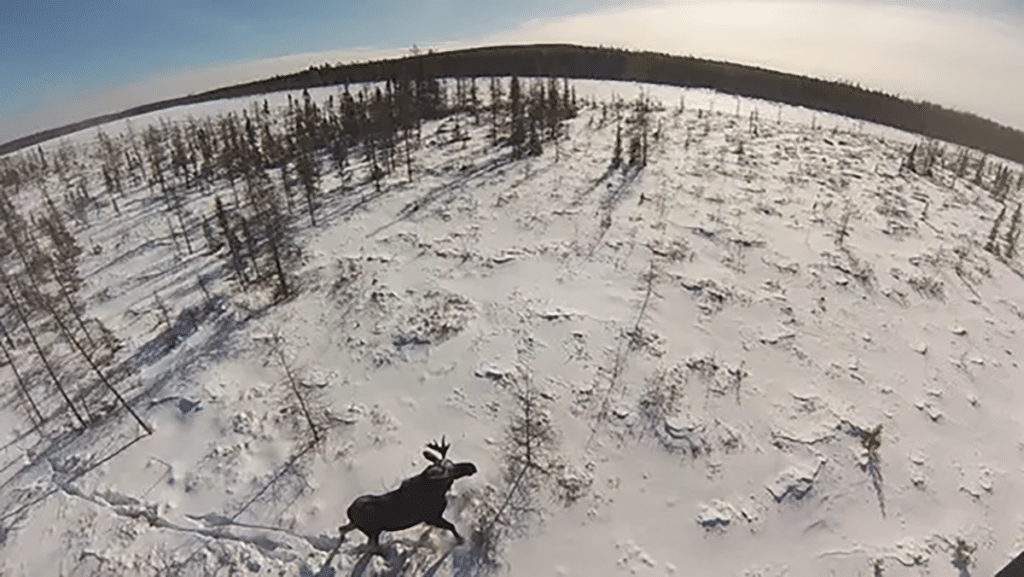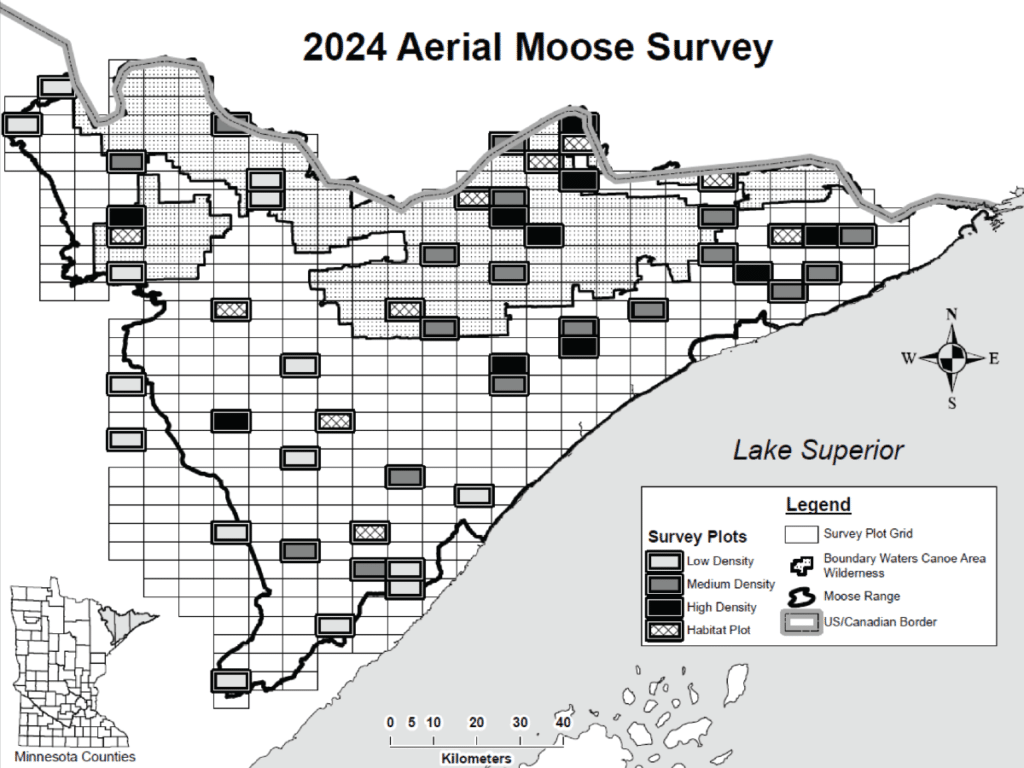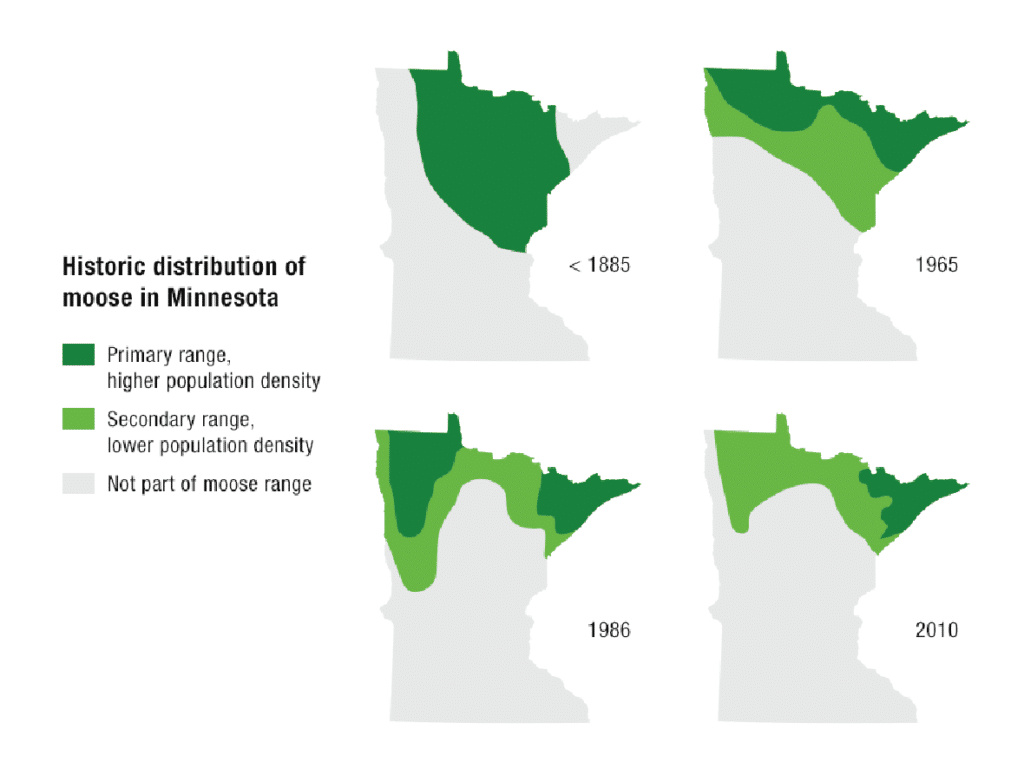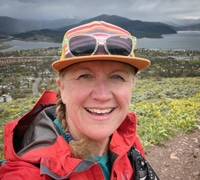
Minnesota’s moose population continues to be stable, according to a recent survey. The study area includes the Boundary Waters Canoe Area as well as portions of the Superior National Forest. The report, put out by the MNDNR, concludes that annual changes remain small. “Relatively speaking, it’s good news,” said DNR Wildlife Research Manager Seth Goreham told Lakeland News. “So long-term trends mean the population is still at risk. But what we’re seeing here is that that decline has slowed down and we seem to be fluctuating around a semi-stable number.”
The agency notes that approximately 60% of the population has declined since the mid-2000s. Consequently, population estimates fluctuate around 3,470 animals.
Even though numbers have stabilized, the agency expresses concerns as moose continue to be impacted by parasites, climate change, and predators. As a result, current trends may not accurately forecast future trends. Underlying demographic factors influencing the evaluations can shift over time.

Survey methods and management
Researchers conduct aerial surveys starting mid-January. The survey area spans nearly 3.8 million acres of northern Minnesota. Using a helicopter, transects are flown a couple hundred feet over the ground. Boundaries stay within a stratified sample of plots. These are randomly drawn from a sampling frame. As a result, they increase the accuracy of population estimations.
Moose are identified by the presence of antlers or sex organs and nose coloration. Calves are identified by size and behavior. Additionally, the survey includes the scientific methods by which plots are identified and recorded, noting historic observations and patterns.
In addition to estimating the moose population, the agency uses the information to identify bull, cow, and calf ratios. Furthermore, studies can help understand the population’s long-term trend. They will also help establish a state harvest quota (when applicable). Understanding moose ecology will also improve and inform the DNR’s management plan. The plan includes six objectives; research, hunting, deer management and their impact on moose, habitat, social considerations, and communications.
Moose hunting has not been allowed in northwestern counties since 1997. With one exception, hunting was banned throughout the entire state in 2013. In recognition of traditions, three Ojibwe bands in northeastern Minnesota (Fond du Lac, Grand Portage, and Boise Fort) have limited hunting rights.
Moose habitat and distribution
Moose thrive in habitats of young forests impacted by windstorms, wildfires, and logging. However, it’s not unusual to find them in a farm field or woodlot. Weighing around 1,000 pounds, they feed on water plants near shorelines in the summer. The boreal forest and acid peatlands of the Superior National Forest and BWCA provide prime habitat for moose. Historically, they’ve had a larger range but now mostly occupy the upper third of the state.

The 2024 aerial moose survey is funded and completed in partnership between the Fond du Lac Band of Lake Superior Chippewa, the 1854 Treaty Authority, and the MNDNR Enforcement and Fish and Wildlife.
More info:
- Minnesota’s moose population remains relatively stable – MNDNR
- 2024 Aerial Moose Survey – MNDNR
- Moose Management – MNDNR
- DNR Says Minnesota Moose Population Has Remained Relatively Stable – Lakeland News

Wilderness guide and outdoorswoman Pam Wright has been exploring wild places since her youth. Remaining curious, she has navigated remote lakes in Canada by canoe, backpacked some of the highest mountains in the Sierra Nevada, and completed a thru-hike of the Superior Hiking Trail. Her professional roles include working as a wilderness guide in northern Minnesota and providing online education for outdoor enthusiasts.

